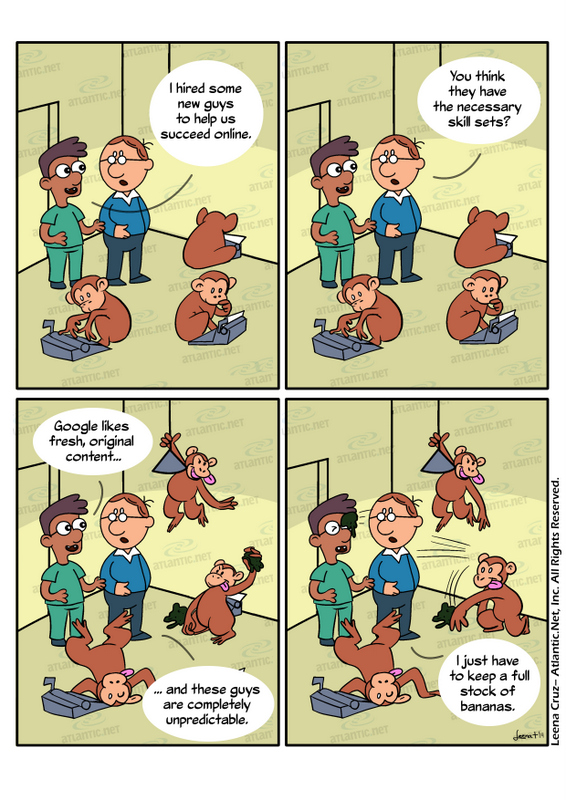Rank Higher in Searches & Increase Conversions – Part 3
March 27, 2014 by Editorial Team ( 450 ) under VPS Hosting
0 Comments
The below is the final segment of our tripartite exploration of general website optimization. Specifically, this series is interested in strong search engine rankings to drive traffic, as well as conversion optimization once visitors arrive on your site. Here are the final elements of our 20 tips to build and maintain your prominence online:
#15. Develop more sophisticated tactics for user relevance.
An active business has huge amounts of data related to what its users want to know. It’s just a matter of taking the customers’ questions and using that information to build your content.
Integrate your content creation process with user requests via calls from a contact center or email. Work closely with your customer service team. Develop a list of top questions that are asked of your representatives related to both sales and support. Address any common questions and concerns on your blog or elsewhere on your site.
#16. Create mini-webs.
Remember that great content should not just be isolated to your blog. In fact, organizing your site in meaningful ways can be tremendously helpful to site visitors. Generate “mini-webs” specific to each part of your site or aspect of your business.
Websites are, in a sense, all about the organization that can be accessed from many different points of entry. For your site to be helpful for every user, you need to make sure no one feels like they are reading the last chapter of a book without grounding in the overarching plot.
You really want your site to be set up in the same manner as an outline for easy use. If you have four distinct service offerings, divide them into four separate themes. One of those themes should be dominant, the most central, and representative of your brand.
An example – to use the book idea in another context – is if you are selling books. You have four main categories: fiction, adventure, drama, and history. Your URLs should be established as follows:
- www.yourwebsite.com/fiction
- www.yourwebsite.com/adventure
- www.yourwebsite.com/drama
- www.yourwebsite.com/history
These aspects of your business, represented by sections of your site, can then be used to create subpages within each section or mini-web, as follows:
- www.yourwebsite.com/fiction/title-of-fiction-book
- www.yourwebsite.com/adventure/title-of-adventure-book
- www.yourwebsite.com/drama/title-of-drama-book
- www.yourwebsite.com/history/title-of-history-book
#17. Use a look that is self-tested.
Of course, you want to place your focus primarily on the customer. However, you are also a web user, and your perspective can be incredibly valuable when working on your site. It should be easy to interact with your site and visually appealing (both usability and general aesthetics). Use a design and layout that is attractive and simple to understand and optimizes your own sense of engagement.
Specifically, consider larger fonts. Mashable recently used this tactic, generally increasing its font sizes to enhance readability.
#18. Broaden your options.
You may feel that you have a niche site or are up against heavy-hitter competition that disallows you from accessing large groups of people. That isn’t the case if you think strategically. Open up your possibilities for greater streams of traffic by seeking keywords that have significant volume. Don’t focus your efforts only on keywords that are in the thousands. Target ones that receive millions of searches as well.
#19. Narrow your options.
Obviously, you can’t just go after the most popular keywords unless you are the dominant force in your industry. Amazon has the market on the “books” keyword well-cornered, for instance. Perform competitive research, and pick battles that you have a solid chance of winning.
#20. Share.
Of course, writing and publishing content is only one side of success with it. To make sure as many people read it as possible, share it through various channels. It’s of no use if no one is reading it.
Social – Spread the word through your social media accounts. You can use Facebook Ads as a cost-effective approach, targeting specifically to gender, geography, interests, and other parameters. Twitter now has a retargeting service called Tailored Audiences; Google+ integrates search with social and offers +Post ads. Don’t forget LinkedIn, and add your badges and images to Pinterest as well. Be ready to answer any questions from potential customers.
Email – Email newsletters have always been popular. Your fresh content is a great way to engage your user base so they can Like pieces and provide social signals for your business.
If they are well researched and coordinated, pay-per-click – PPC campaigns via Google, Yahoo!, and Bing, resulting in an effective creative advertising meme – can deliver huge amounts of traffic.
Syndication – Yahoo! has developed a content syndication network on a pay-per-click model, where your content appears on the main Yahoo! page.
Conclusion
Content marketing has become a major piece of success in online business. However, you first have to drive the traffic to your site through search engines and other available methods. Using the tactics in this series, you can engage users both off and on your site to optimize conversions and build your business.
This piece serves as a part of our own user engagement. With 20 years in business, Atlantic.Net is the trusted choice for thousands of companies to host their IT environments, featuring innovative and secure Windows Cloud Hosting plans and state-of-the-art Linux Cloud Hosting solutions.
We also offer dedicated hosting, managed, and VPS hosting solutions.
By Moazzam Adnan; comic words by Kent Roberts & art by Leena Cruz.
Get a $250 Credit and Access to Our Free Tier!
Free Tier includes:
G3.2GB Cloud VPS a Free to Use for One Year
50 GB of Block Storage Free to Use for One Year
50 GB of Snapshots Free to Use for One Year

